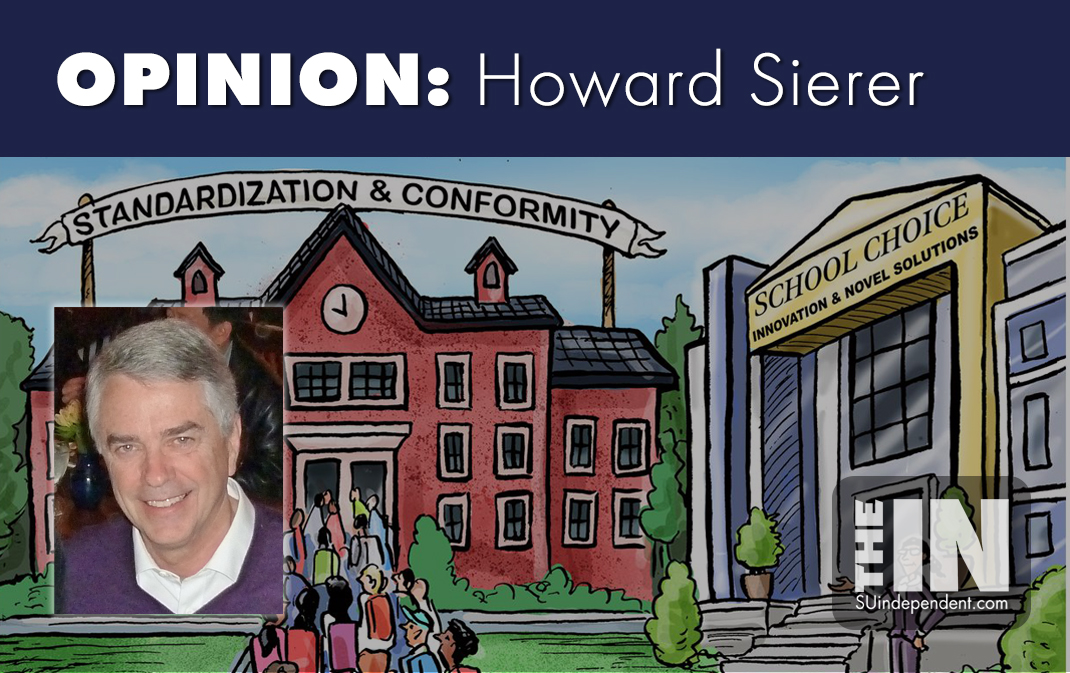
School Choice On A Roll
– By Howard Sierer –
With little notice except by advocates like me, school choice is on a roll. State after state is adopting programs that let parents choose where their K-12 children get their education. Many opt to leave their children in public school systems but as school choice is becoming more widely understood, charter and private schools are growing rapidly.
For decades, activists on the right had tried to steer state money toward alternatives to the public school system. Usually they proposed vouchers, in which the state would pay part or all of a child’s tuition directly to a private school. But vouchers butted up against the constitutional separation of church and state when parents wanted their children enrolled in Catholic or other church-sponsored schools.
What has changed is a funding approach different from vouchers: education savings accounts (ESAs). Instead of public funds going directly to schools, parents who opt out of the public school system get several thousand dollars in an account that they can use for private school tuition, homeschooling or other education-related expenses.
The ESA bandwagon started in West Virginia in 2021 and moved to Arizona in 2022. The beat goes on this year with Utah, Iowa, Arkansas, Florida, Oklahoma, Ohio, and Indiana joining in. More will likely follow.
The biggest change is who can use ESAs: everyone. Since they are not income-tested, they do more than rescue low-income kids in the worst schools, although they certainly do that. Some argue that offering state money to all parents takes the focus off helping kids in failing schools. But to a much larger segment of the public, that’s a reason to support them.
In a 1955 paper, Nobel-Prize winning economist Milton Friedman recommended that government should stop running schools and instead give parents “subsidies” that could be redeemed at “approved” educational institutions. This, he asserted, would create free market competition, expand the choices available to parents, and produce better outcomes than government-funded monopolies.
Standing firmly in the way since Friedman’s day have been teachers unions who worry that their public school monopoly would slip away since many charter and private schools are non-union. The Covid-19 pandemic overlapping with the ever-expanding culture war provided an opening for longstanding, well-financed conservative advocacy groups to overcome the inertia that had resisted changes to educational policy.
Morgan Polikoff, an associate professor at USC Rossier School of Education, says “We’re ending up with, really, two different systems for arranging our schools.” Blue states are sticking with the traditional state-funded public education system, while red states like those listed above are increasingly creating an option for government-subsidized private school tuition.
This grand experiment is exactly what our federal system of government allows. Public schools remain on the menu in all states and continue to be the default choice for many parents even in states with ESAs.
ESAs don’t create private schools. Dissatisfied parents who want a choice create demand for them and entrepreneurial educators respond. Competition will result in underperforming private schools going out of business, replaced by those who serve their students better, just as companies fail that don’t serve their customers well.
Interestingly, Pres. Obama’s Education Department encouraged and worked to improve charter schools. Sadly but unsurprisingly, the Biden administration has rejected Pres. Obama’s legacy. Biden, kowtowing again to the progressives who run his administration, is working to stifle charter schools, favoring instead the teachers unions that donated heavily to his campaign instead of parental choice.
Friedman suggested that once the market of educational options was up and running, the government’s role could be something more like a restaurant inspector ensuring “certain minimum standards” are met. We’re a long way from that happening. But perhaps it’s not as far off as it once was.
If ESAs live up to their billing, blue states will reluctantly shift in that direction. But I predict that state-run public schools, because of their default position, will remain a major if not dominant part of the mix indefinitely, leaving Friedman’s prescription unfulfilled.



